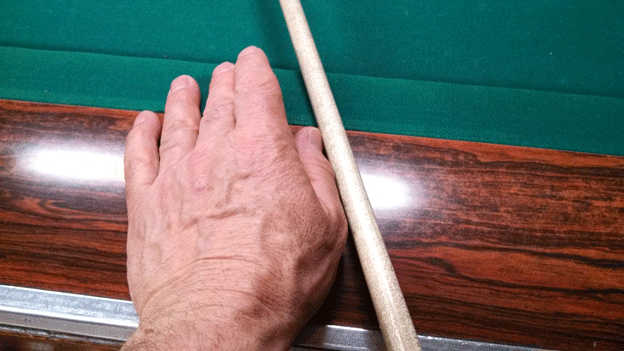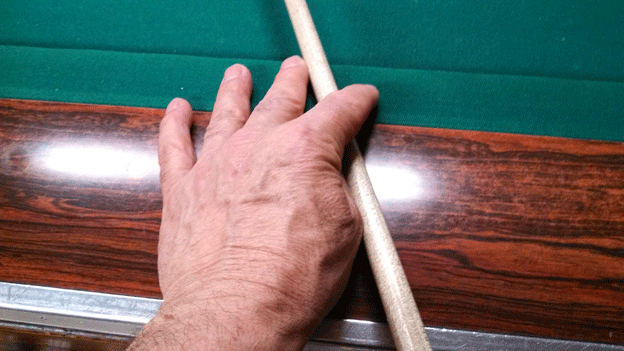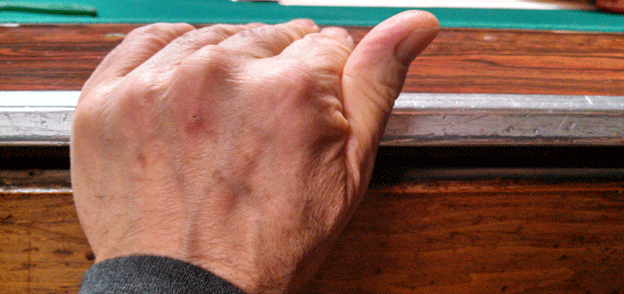We all know that it is important to keep our cue stick as level to the bed of the table as possible. We do this to prevent the cue ball from bouncing off the table, or curving from a masse effect.
But, keeping our cue stick level when the cue ball is near a rail is a little challenging. In this article I want to look at two rail bridges. It surprises me how many intermediate players don’t use or know about these bridges. I wanted to make sure we all have these bridges down and understand why using them is important.
Whenever possible, we always want to keep our cue stick as level as possible. Bridges that are raised up on the rail elevate our cue stick and have us hitting down on the cue ball more than is necessary. This can cause us to miss shots or position!
The first bridge is best used when the cue ball is 6 or so inches from the rail. We lay our stick on the rail as flat as possible, put our thumb next to the cue stick and put our index finger over the shaft. It is easy to do, provides maximum stability, and keeps our cue stick as level as possible.

Here is how this rail bridge is formed:

The next bridge I want to look at is the one we use when the cue ball is closer to the rail, say about 3 or so inches from the rail. Again we want to keep our cue stick as level as possible. What we do here is put the palm of our hand on the side of the table with our fingers on top of the rail. We point our thumb straight up in the air right next to our index finger.
Notice how the rail has a slight downward curve to it. By placing our palm on the side of the table, we can use the curve of the rail to get our cue stick really level to the table.
Here is what this bridge looks like.

On all these shots, make sure that you chalk the edges of your cue tip well and relax your grip hand. Now is the time for a slow pull back. On the more difficult rail shots, I like to look at the cue ball last. This is not how I normally do things, but it seems to work a little bit better for me. Once I get dialed in, keeping my eyes on the cue ball prevents my head from moving, and increases my accuracy.
Try looking at the cue ball last and see how it works for you, particularly on these shots where the cue ball is close to the rail.